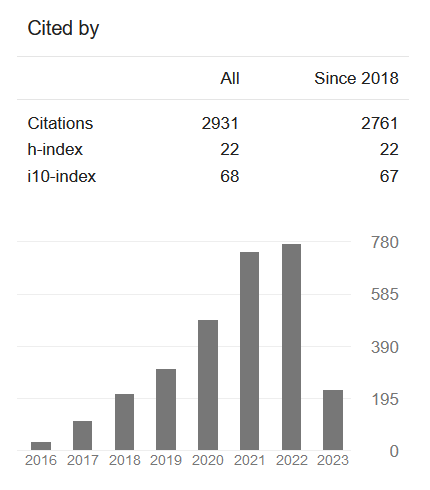Credit of peanut to subsequent wheat under desert farming conditions in presence of diazotrophs and nitrogen fertilizers( Vol-4,Issue-4,April 2018 ) |
|
Author(s): Badawi H. Mona, Fayez M. |
|
Keywords: |
|
|
Peanut, wheat, diazotroph inoculation, N fertilization, residual effect, crop yield. |
|
Abstract: |
|
|
Rotation with leguminous crops to break non-legume monocultures has been established to benefit the latter. The lacking information on this cultivation system in stressed environments encouraged the implementation of two field trials in two different locations of Ismailia desert soils. The experimental design included the cultivation of wheat subsequent to peanut in presence of diazotroph inoculation and N fertilization. Bradyrhizobial inoculation of the legume in combination with 50 kg N acre-1 resulted in the highest total biological yields of 4.24 and 5.01 kg plot-1 at the experimental sites 1 and 2, respective seed yields of 1.46 and 1.61 kg pot-1 were recorded. In case of the cereal crop, the measured acetylene reducing activities in soils of associative diazotroph-inoculated plants together with 50 kg N acre-1 were the highest being 515.8-886.2 and 616.7-1066.2 nmoles C2H4 g-1 h-1 at locations 1 and 2 respectively. The enzymatic activity of fallow-cultivated wheat generally represented ca. 95 % of that in subsequent to peanut. Irrespective of inoculation and N fertilization, the wheat biomass yield increases in residual effect-field over the fallow one were 6.4-35.1 % and 4.6-38.5 % at experimental sites 1 and 2 respectively. Increase percentages of 3.1-26.6 and 6.9-44.7 were scored as well for grain yield. The beneficial residual effect of the legume to the succeeding cereal was also extended to protein yields, increases of 4.0-14.2 % and 4.5-7.6 % were estimated for grain protein as well as 8.3-24.1 % and 8.1-35.3 % for straw protein yield. The findings of this study proved that the positively yield turnover of a legume is extended to the subsequent non-legume. Besides, the beneficial residual effects of legumes toward rotated non legumes could be magnified by diazotroph inoculation together with adequate N supply particularly in stressed environments represented, in the present study, by Ismailia sandy soil. |
|
Cite This Article: |
|
| Show All (MLA | APA | Chicago | Harvard | IEEE | Bibtex) | |
Share: |
|

 DOI:
DOI: 



























